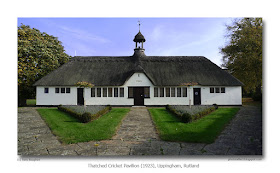 click photo to enlarge
click photo to enlargeThe earliest stone bridges in Britain - the clapper bridges - are simply large pieces of stone that span streams: sometimes just one, and on wider waters two or more with intervening supports. The technology of those early days didn't stretch to anything more elaborate and fashion wasn't a consideration; it was purely function that drove the design.
When arched bridges made of stone examples with semi-circular arches and pointed arches were often built during the medieval period. The Romans introduced the former, and the Gothic builders the latter, so it was these stone bridges were constructed from the C12 to the C15. In theory the pointed arch can span a wider waterway but the disadvantage is that it has to be built quite high to do so. Often a series of rounded arches with intervening piers was chosen instead, though many medieval bridges followed the fashion and have pointed arches. In the sixteenth and seventeenth centuries, with the influence of the Rennaisance, fashion turned to semi-circular, rounded arches, and also to segmental arches which involve a segment of a circle smaller than 180 degrees on vertical piers. However, the technology had not developed to the extent that earlier features could be jettisoned.
Today's photograph shows the Deeping Gate Bridge over the River Welland at Deeping St James. It connects Cambridgeshire (the left bank) with Lincolnshire (the right). This structure was built in 1651, a date that is carved into the stonework on the upstream side, and is typical of its period. Gone are the pointed arches and ribs underneath that allowed stone bridges to be lighter, but the short spans, heavy piers, triangular cutwaters and simple chamfered decoration of the arches remains. Not until the next century would balustrades, niches, panelling, statuary, urns and segmental arches wide enough to span a small river appear.
I have photographed this bridge before, but stopping at it the other day I was tempted into another shot by the reflections, autumnal tints and saturated colours produced by the largely overcast sky. On this occasion I positioned myself downstream on a footbridge.
photograph & text (c) T. Boughen
Camera: Olympus E510
Mode: Aperture Priority
Focal Length: 40mm (80mm/35mm equiv.)
F No: f6.3
Shutter Speed: 1/250
ISO: 100
Exposure Compensation: -1.0 EV
Image Stabilisation: On




-Bark.jpg)

,-Uppingham,-Rutland.jpg)











,-Thaxted,-Essex.jpg)












,-March,-Cambridgeshire.jpg)
.jpg)
